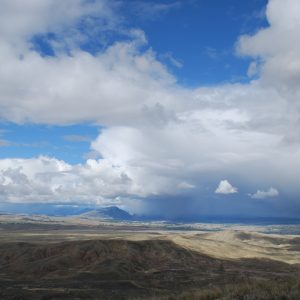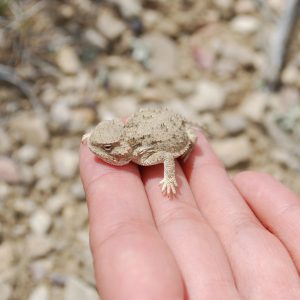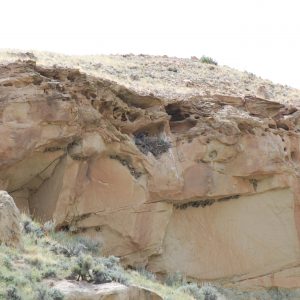It’s been a BUSY several weeks here in Cody, Wyoming. I have been scouring the field office in search of plants to collect later this year for the Seeds of Success program, taking specimens for herbarium vouchers, and documenting locations. Along the way, I inspect reservoirs for the plant Rorippa calycina (persistent sepal yellowcress), which BLM classifies as rare in Wyoming, as well as any amphibians and reptiles. In the midst of all this searching, I have also been visiting known sage grouse lek locations to collect feathers for a genetic study, although I won’t pretend to understand the specifics at this point! I look forward to learning the results of this study, but that will be some time in coming.
Last week I was assigned to begin one of my favorite tasks: monitoring two golden eagle nests. The chicks are very young still, between 10 and 25 days old. They are fluffy and white, and very clumsy at getting around in the nests. Although it can be challenging to manage 6 hours of monitoring a week per nest on top of everything else, it’s definitely worth it. We are working on finding a way to multi-task while I sit at the nests with binoculars and spotting scopes, mostly by transferring work projects to my personal laptop so that I can accomplish more while I’m out there, such as analyzing sage grouse count data in relation to vegetation treatments. It’s cool to be a part of firsts here: looking at sage grouse trends specific to the BLM’s Cody field office and its management strategies, helping to conduct the first bat survey ever done in the field office, and even setting up a real herbarium in which to store plant specimens that until now have been stored in a cardboard box on top of a shelf. I am again realizing how spoiled I am getting to have such an amazing job where I can be useful, busy, and blissfully outdoors practically every day. I wish I could keep this job forever!
- Horned Lizard
- Adult golden eagle visits nest











